I have the following situation where I need to solve the question of displaying data inside a column, for each data-part of a concatenated string.
I'm relatively new to this and the sad thing is I was not able to transfer other already read examples into my current situation. I've read something about crosstab and pivot but I have only one column that holds that data and I don't know how much comma-separated values will be inside the column, so it needs to be dynamic anyhow and I don't know how to solve it with this.
So lets say we have a postgres table like this (version 9.6.3 on Amawon Aws - sadly they don't support some things like arrays):
CREATE TABLE touchpoints (
customer_id varchar(50) PRIMARY KEY,
purchase_timestamp date,
touchpoints_till_purchase text,
purchase_quantity int,
purchase_value int);
Let's fill it with data like I have it inside my view:
INSERT INTO touchpoints (customer_id, purchase_timestamp, touchpoints_till_purchase, purchase_quantity, purchase_value)
VALUES ('testuser0@example.com', 'Jun 01, 2018 11:12', 'SEO,Direct', 2, 180),('testuser1@example.com', 'Jun 03, 2018 15:56', 'Direct,Facebook_Paid,SEO', 1, 100),
('testuser2@example.com', 'Jun 04, 2018 21:44', 'Direct,Direct,Direct,Direct,Direct,Direct,Direct,Direct', 3, 170),('testuser3@example.com', 'Jun 06, 2018 15:42', 'Direct,SEO,SEO,Direct', 5, 270),
('testuser4@example.com', 'Jun 06, 2018 15:42', 'Direct,Direct,Direct,Direct,Direct,Direct,Direct', 5, 270);The created table should look like this afterward, that's how my actual table looks like too.
actual situation:
So I am trying to set up a query or function that's splitting the values inside the "touchpoints_till_purchase" field into separate columns like in a pivot.
What I am trying to build up is something like that:
expected result:
Should be not that hard I thought but I can't solve it with my actual low skills in PostgreSQL. All the solutions I watched and tried didn't to the trick or I used them false I guess.
The expected query should keep a few things in mind:
- I don't know how many comma-separated values will be inside the touchpoints column that should get splitted
- I don't have a corresponding column that is labeling the touchpoints (like counting them in a loop or something)
- It needs to be dynamically and it should run on Amazon AWS --> sadly there are a few unsupported things , you can keep a look at here: https://docs.aws.amazon.com/redshift/latest/dg/c_unsupported-postgresql-functions.html
- I can't use alternatives like Json format because i need to solve it with separate columns
As far as i tried to solve this many many hours and didn't find a solution i would really looking forward for some help of sql professionals like you.
Many many thanks in advance!

